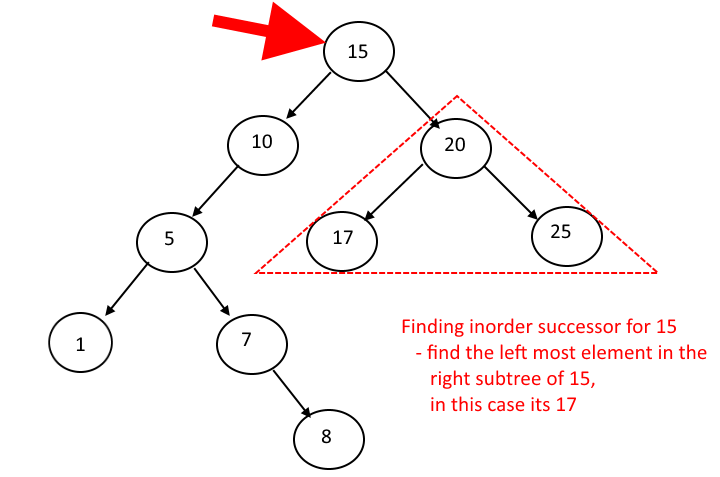Find the in-order successor of a given node in a binary search tree
Note:
We can do in-order traversal, which will give us a sorted array and then find the in-order successor very easily.
- But the time complexity of in-order traversal in O(n).
Where as finding the in-order successor is very frequently used operation. Hence, we need to find better solution.
- We will show the solution which will run in O(log(n)).
We will assume the BST is constructed in a way that each node has a reference to its parent.
Case I : Node has a right subtree
In that case we need to find the left most node in its right subtree which is also the min (lowest) node in its right subtree.

Case II : Node does not have a right subtree

Pseudo code
inorderSuccessor (node n) {
if (n has a right subtree) {
return leftmost child of right subtree;
} else {
while (n is a right child of n.parent) {
n = n.parent; // Climb up
}
return n.parent; // Deepest ancestor in the path from root, for which the node would be in the left sub-tree
}
}
Watch the following excellent video to understand this algorithm in more detail!
Solution
If we have a BST in which each node has a reference to its parent node then the following solution can give us the inOrderSuccessor of the given node.
- CTCI_6_4.6

